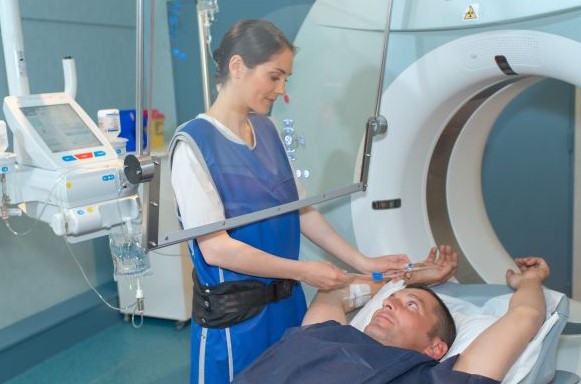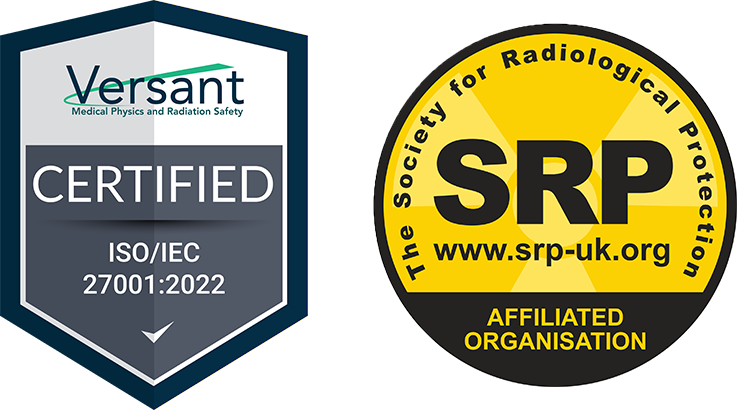Implementing a radiation safety program is the best way to protect radiation workers and maintain safe radiological conditions in your clinic or university. If you are a new facility starting from scratch, implementing a radiation safety program can be an overwhelming task. We have put together a step-by-step guide to help clarify areas you will need to address.
Who Regulates What?
It is important for any new radiation safety program to understand which regulations to follow. The U.S. Nuclear Regulatory Commission (NRC) is responsible for regulating radioactive materials in the United States. However, they do not regulate radioactive material in any of the 37 Agreement States. These Agreement States have signed agreements with the state’s governor and the chair of the NRC that declare they take responsibility for all radioactive material regulation within the state. Agreement States can set their own rules for how radiation is monitored, handled, and used if they are at least as strict as the NRC.
Each state regulates the use of ionizing radiation generating equipment within the state. It is very important to research your individual state regulations.
For a list of individual state radiation control programs and their specific rules and regulations, we recommend visiting the Conference of Radiation Control Program Directors (CRCPD) website.
Step 1: Identify a Radiation Safety Officer
A Radiation Safety Officer is a required element of a radiation safety program.
According to AAPM Report 160, the RSO in a radiation safety program “is responsible for the implementation, coordination, and day-to-day oversight of the radiation protection program.” An RSO enforces policies and procedures regarding radiation safety and ensures the facility’s use of ionizing radiation is compliant with regulatory requirements, whether that be state or federal. These individuals are required to meet certain education, training, and experience requirements to assume the role.
The responsibilities of the RSO are many. In addition to managing the radiation safety program, this person will:
- Provide advice and assistance on radiological safety matters,
- Ensure safe use of radioactive materials,
- Ensure compliance with regulatory and license requirements,
- Identify radiation safety problems and correct them,
- Ensure ALARA practices are enforced,
- Perform audits and surveys of work areas as necessary,
- Dose monitoring,
- Instrument calibration,
- And more.
Step 2: Get Copies of State and Federal Regulations
Federal regulations can be found on the NRC website. As mentioned above, most states have their own regulatory body. This may also be a good time to contact your state regulator and introduce yourself.
Step 3: Set-up Administrative Documents & QA Program
You will want to lay out the various roles in your radiation safety program in an organization chart. This includes management, IT, radiation safety resources, and additional radiation modalities and departments.
It will also be helpful to create a Standard Operating Procedure Manual on radiation protection that describes emergency procedures, training policies, and credentialing all radiation workers should be familiar with.
Step 4: Establish a Radiation Safety Committee
A radiation safety committee is typically made up of:
- The RSO,
- An authorized user of each type of use permitted by the license,
- A nursing representative, and
- A representative who is neither an authorized user nor the RSO.
Many universities and larger clinics find an RSC helpful for efficient radiation safety program management. However, they are not always mandatory depending on your use of radiation. You may find a radiation safety committee is not necessary for your facility.
Step 5: X-ray Room Shielding

Facilities that utilize radiation are required to have a shielding plan developed by a qualified expert, such as a medical physicist. Most states also require the shielding plan to be submitted to the state before the equipment can be used.
When setting up a radiation safety program, it will be necessary to contact an appropriate QE to put together the shielding plan. You will work with them to implement the appropriate materials and signage throughout your facility. Afterward, integrity and regulatory surveys must be performed to ensure compliance with area dose limits.
Step 6: Registration of Radiation Machines & RAM License Application
A new facility with new X-ray equipment must register each unit with the state, typically within 30 days of acquiring the unit. The use of X-ray-producing equipment is regulated on a state-by-state basis. The appropriate forms and required supporting documentation can be found on your state’s regulatory website or by contacting your regulator.
A new facility intending to use radioactive material must apply to either their Agreement State or the NRC for approval. In preparation for submitting the application, all the previous steps should be completed. Many of the items above will be reviewed along with the license application to determine approval status.
Note that some states may require radiation-producing machines to be inspected regularly by state-approved qualified experts to maintain a registration.
Step 7: Set-up a Personnel Monitoring Program
Licensees/Registrants are required to monitor radiation exposure of radiation workers to remain in compliance with occupational dose limits.

It is important to set up a personnel monitoring program for radiation workers who regularly work with or could encounter radiation while on the job. These programs require personnel to wear a dosimeter badge which measures their total received exposure. RSO’s periodically review the personnel exposures.
There are a variety of dosimeter options available including TLDs, ring badges, and badges that provide on-demand dose reads.
Step 8: Recordkeeping
Implementing a radiation safety program means there will not be existing inspection reports, previous audits, or correspondence with regulators on file to familiarize yourself with. However, as the RSO, you will be responsible for maintaining all records regarding personnel exposure, exposure levels to the public, surveys, calibrations, and any maintenance completed on the facility’s X-ray equipment moving forward. Consult your state regulations to determine how long individual records need to be kept.
Conclusion
While there are many moving parts to setting up a radiation safety program, it is an important aspect of a safe workplace. Following these steps will have you well on your way to leading a successful program.
Our experienced radiation safety officers, health physicists, and medical physicists can help you implement a radiation safety program. Contact sales@versantphysics.com to be connected with a physicist or visit our regulatory page for more information.
Interested in becoming a Radiation Safety Officer yourself? Versant Physics offers a 20-hour online Medical Radiation Safety Officer course that teaches how to implement a successful, compliant radiation safety program. It will help you gain a practical understanding of regulations governing the safe use of radiation-emitting machines and radioactive materials, as well as responsibilities for managing radiation safety in a medical setting.


